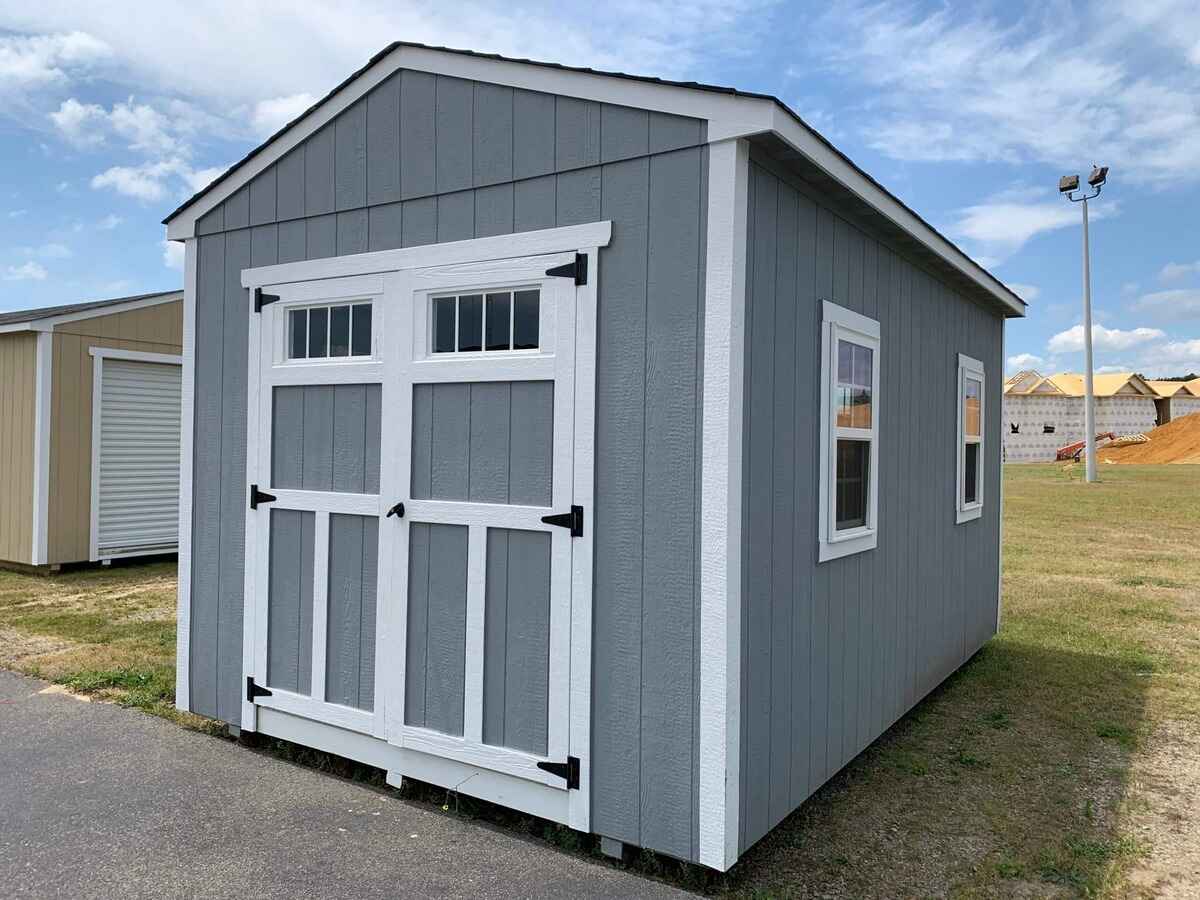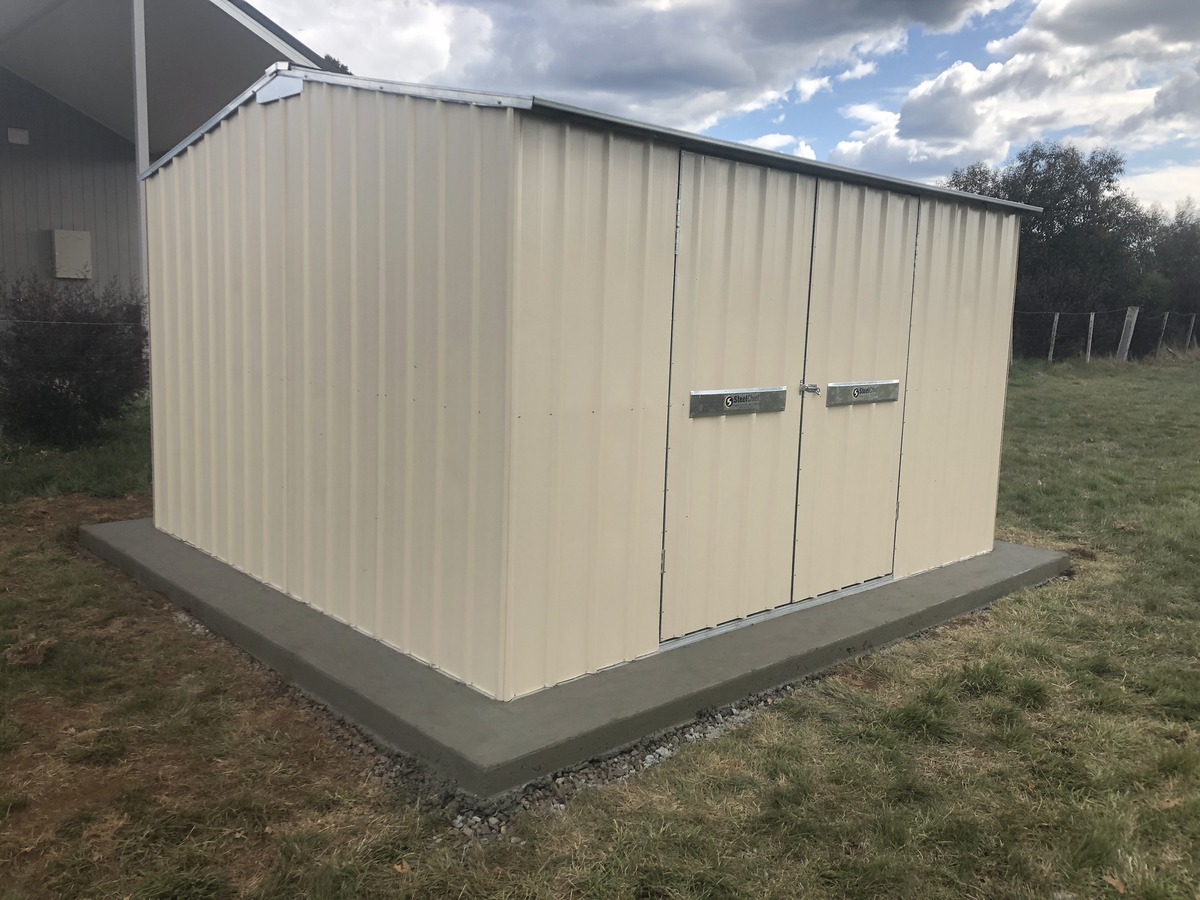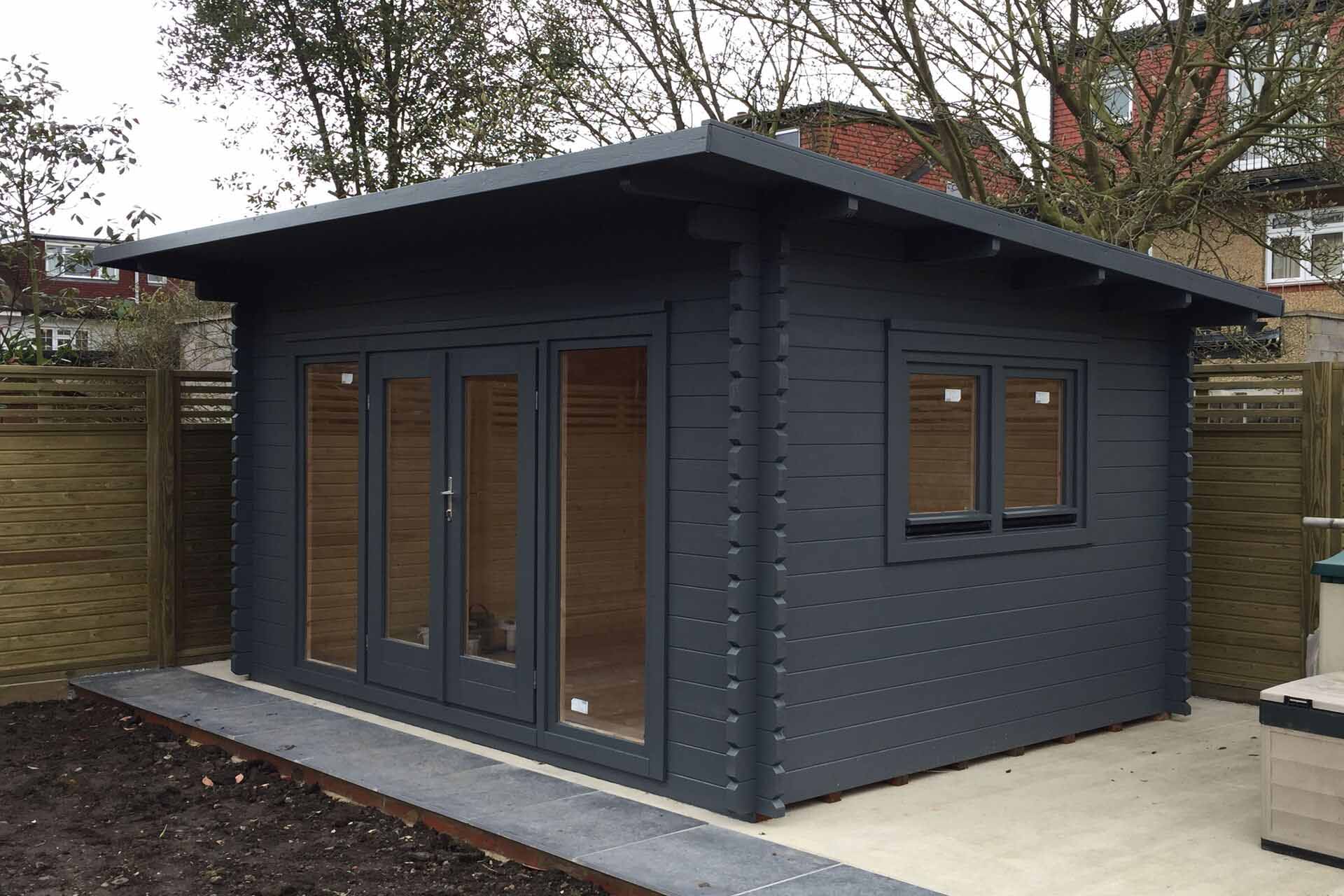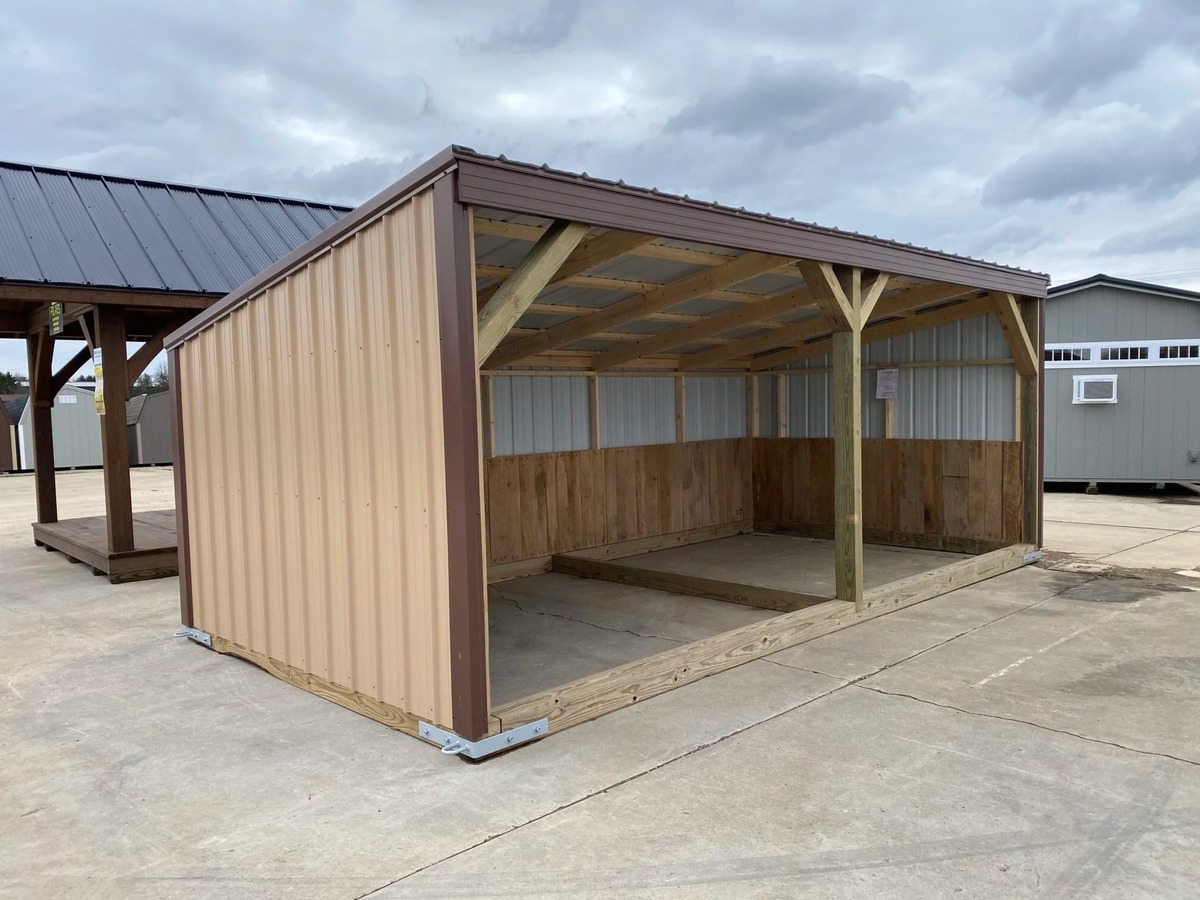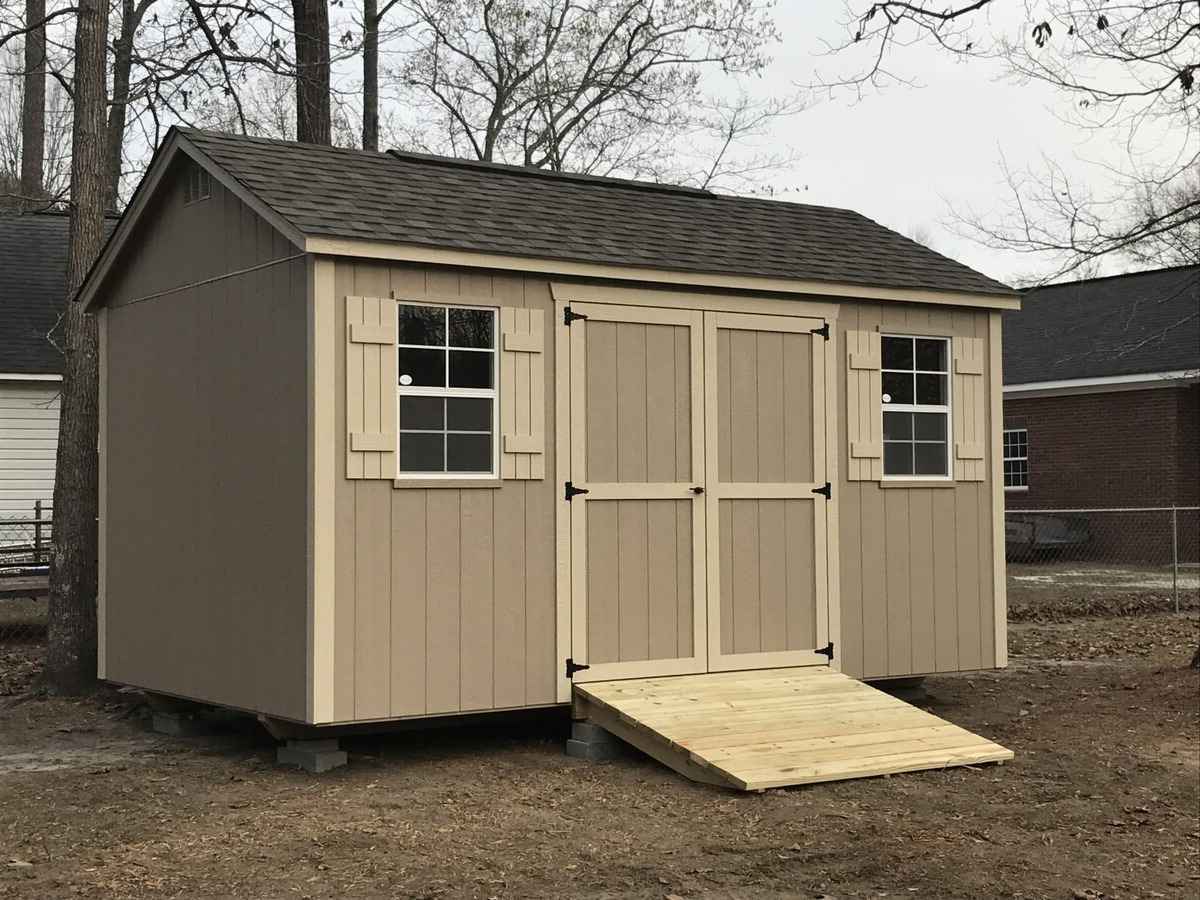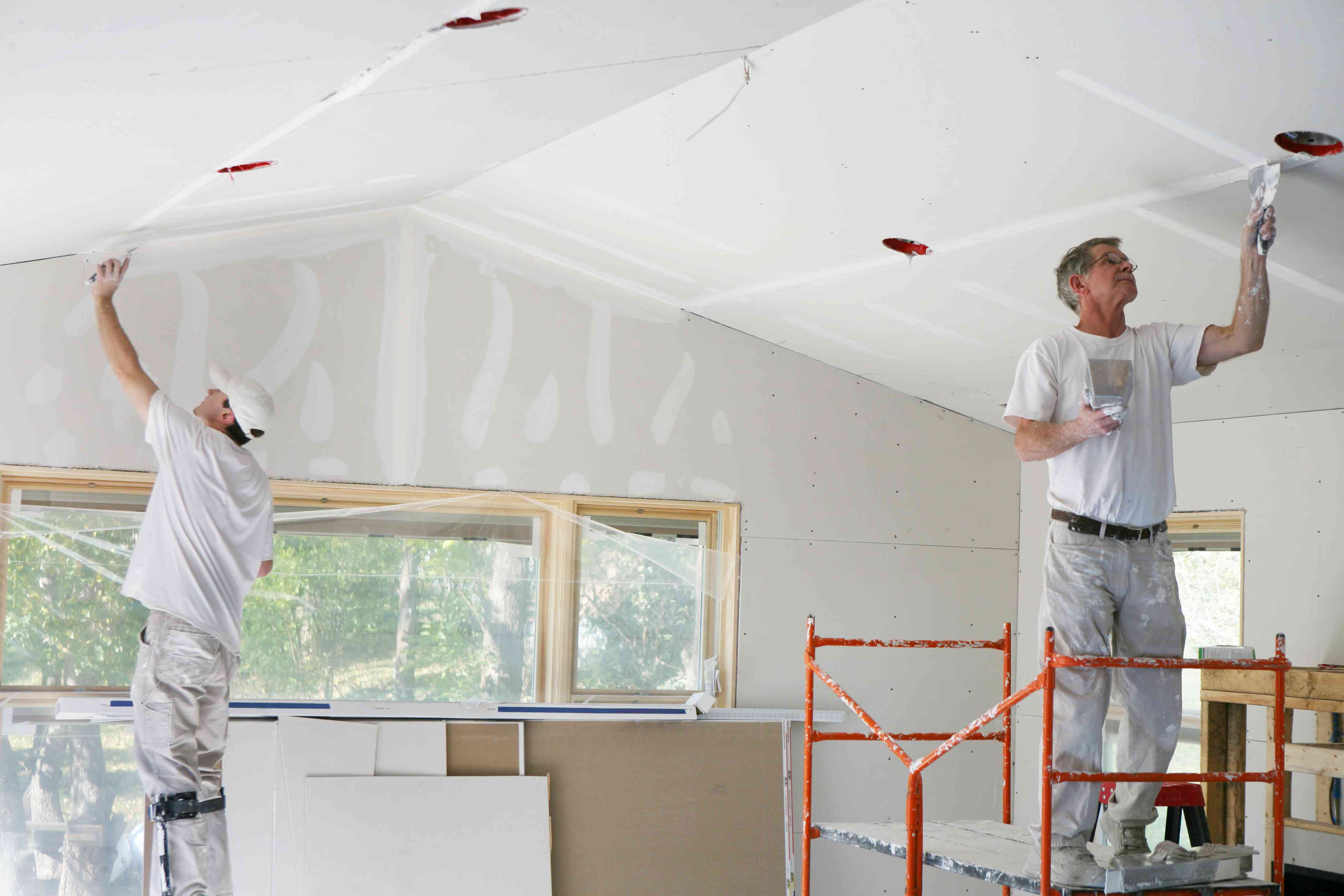Home>Home & Furniture>Garage & Basement>How To Build A Shed
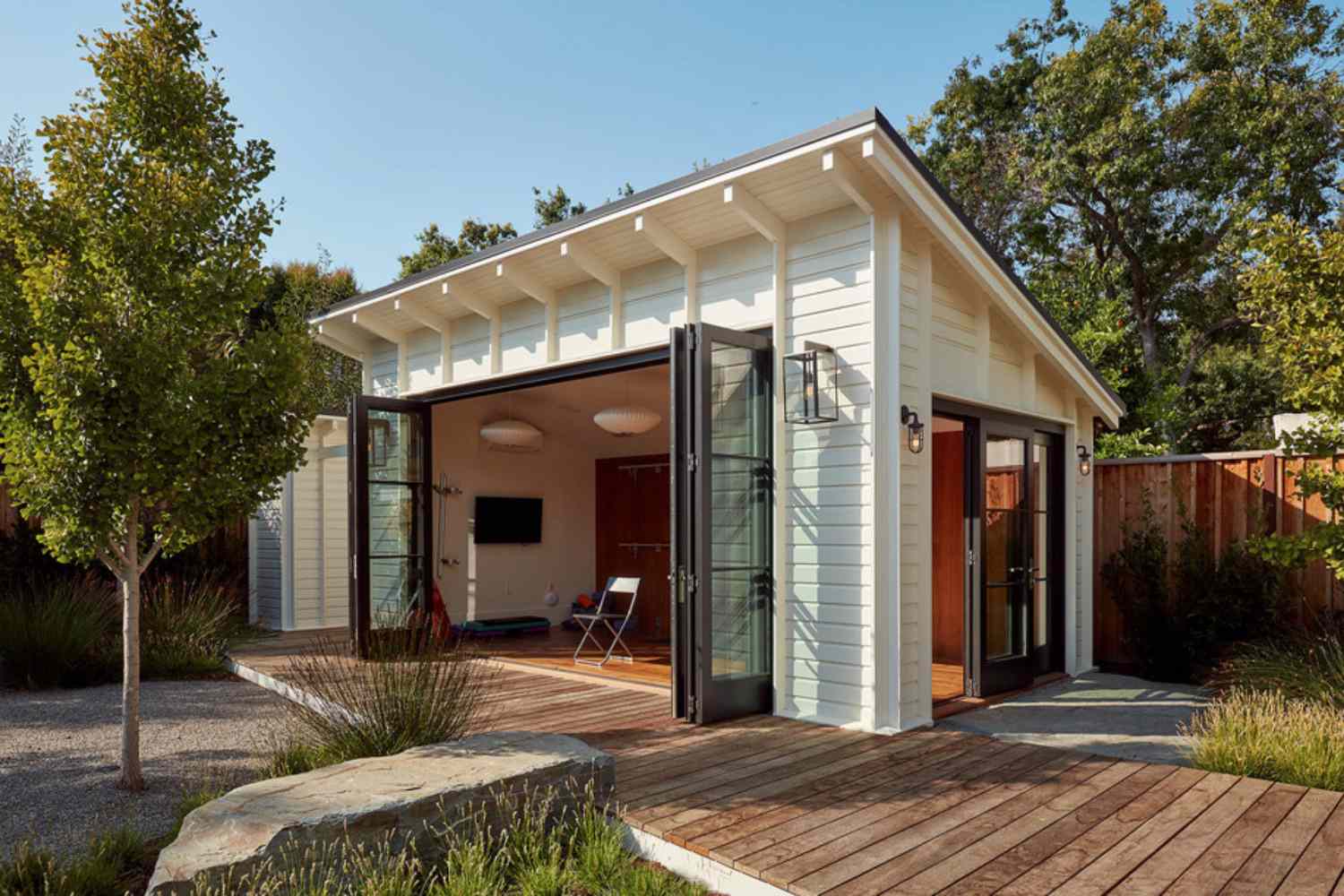

Garage & Basement
How To Build A Shed
Published: February 20, 2024
Editor-in-Chief with a decade in home renovation and a passion for vintage furniture. Diane is known for her weekend treasure hunts at flea markets, enriching our content with unique style insights.
Learn how to build a shed in your garage or basement with our step-by-step guide. Get expert tips and advice for a successful DIY project.
(Many of the links in this article redirect to a specific reviewed product. Your purchase of these products through affiliate links helps to generate commission for Twigandthistle.com, at no extra cost. Learn more)
Introduction
Building a shed can be a rewarding and practical project that adds valuable storage space to your property. Whether you need a dedicated space for gardening tools, outdoor equipment, or a workshop, a well-constructed shed can meet your needs while enhancing the aesthetic appeal of your home.
Constructing a shed from scratch allows you to customize the design, size, and features to perfectly suit your requirements. From selecting the ideal location for your shed to choosing the right materials and finishes, every decision contributes to the functionality and visual appeal of the final structure.
Throughout this comprehensive guide, we will walk you through the step-by-step process of building a shed, covering everything from planning and preparation to the finishing touches and maintenance. By following these detailed instructions and tips, you can embark on this fulfilling DIY project with confidence, knowing that you have the knowledge and guidance to create a durable and attractive shed that will serve you well for years to come.
Read more: How To Build A Portable Shed
Step 1: Planning and Preparation
Before embarking on the construction of a shed, thorough planning and preparation are essential to ensure a successful and efficient building process. This initial step sets the foundation for the entire project, allowing you to make informed decisions and avoid potential setbacks along the way.
Design Considerations
Begin by determining the purpose of your shed. Will it primarily serve as a storage space for garden tools, outdoor furniture, or as a workshop? Understanding its intended use will help you establish the ideal size, layout, and features required to accommodate your needs.
Consider the shed's placement in your yard, taking into account factors such as sunlight exposure, accessibility, and proximity to utilities. Additionally, be mindful of local building codes and regulations, ensuring compliance with any necessary permits and restrictions.
Sketching and Measurements
With a clear vision of your shed's purpose and location, sketch a rough design that includes the layout, dimensions, and any specific features you wish to incorporate. This initial sketch will serve as a reference point for further planning and construction.
Accurate measurements are crucial at this stage. Take precise measurements of the chosen site, considering the terrain and any necessary adjustments to ensure a level foundation. These measurements will inform the materials list and guide the construction process.
Material Selection
Selecting the right materials is pivotal to the shed's durability and longevity. Choose high-quality lumber, treated for outdoor use, to form the structural framework. Consider the roofing materials, siding options, and flooring materials that best suit your climate and aesthetic preferences.
Incorporate weather-resistant materials to protect the shed from the elements, ensuring that it remains sturdy and secure over time. Additionally, gather the necessary hardware, such as nails, screws, and brackets, to facilitate the assembly process.
Read more: How To Build Shed Foundation
Budgeting and Timeline
Establish a realistic budget for the project, factoring in material costs, tools, and any additional expenses such as permits or professional assistance if needed. Creating a comprehensive budget will help you prioritize expenses and make informed decisions throughout the construction process.
Furthermore, outline a timeline for the project, considering factors such as weather conditions, availability of materials, and your personal schedule. Setting a realistic timeline will allow you to pace the project effectively and anticipate any potential delays.
By meticulously planning and preparing for the construction of your shed, you lay the groundwork for a smooth and successful building process. With careful consideration of design, materials, budget, and timeline, you set the stage for the subsequent steps of gathering materials and tools, building the foundation, and ultimately bringing your shed to life.
Step 2: Gathering Materials and Tools
With the planning phase completed, the next crucial step in building a shed is gathering the necessary materials and tools. This phase requires careful consideration of the items required for the construction process, ensuring that you have everything on hand to proceed smoothly and efficiently.
Lumber and Building Materials
Begin by sourcing the lumber and building materials essential for constructing the shed's framework and walls. Select high-quality pressure-treated lumber for durability and resistance to decay, ensuring that it is suitable for outdoor use. Consider the dimensions and quantity required based on the shed's design and measurements, accounting for any additional framing elements and bracing.
Roofing and Siding Materials
Choose the appropriate roofing and siding materials based on your climate and aesthetic preferences. Options such as asphalt shingles, metal roofing panels, or cedar shingles offer varying degrees of durability and visual appeal. Similarly, consider the siding materials, such as plywood, oriented strand board (OSB), or vinyl siding, ensuring they align with your shed's design and environmental requirements.
Read more: How To Build An Office Shed
Hardware and Fasteners
Gather an assortment of hardware and fasteners, including nails, screws, bolts, and brackets, necessary for securing the shed's components. Ensure that you have the appropriate sizes and types of fasteners for the various construction tasks, from framing the walls to installing the roofing and siding.
Tools and Equipment
Compile a comprehensive list of tools and equipment required for the shed construction process. Essential tools may include a circular saw, power drill, hammer, level, tape measure, and framing square. Additionally, consider specialized tools such as a nail gun, roofing nailer, and miter saw to streamline specific tasks and enhance precision.
Safety Gear
Prioritize safety by acquiring the necessary safety gear, including protective eyewear, gloves, and hearing protection. These items are essential for safeguarding yourself during the construction process, particularly when handling power tools and working with heavy materials.
Additional Considerations
Consider any additional materials specific to your shed's design, such as windows, doors, and hardware for finishing touches. Ensure that these items align with your initial design and measurements, allowing for seamless integration during the later stages of construction.
By meticulously gathering the required materials and tools, you set the stage for a streamlined and efficient construction process. With careful consideration of lumber, building materials, hardware, tools, and safety gear, you equip yourself with the essentials to bring your shed to fruition.
Read more: How To Build A Shed Floor
Step 3: Building the Foundation
The foundation serves as the fundamental support system for your shed, ensuring stability and longevity. Building a solid foundation is crucial, as it provides a level base for the structure and helps prevent issues such as settling and moisture infiltration. The following steps outline the process of constructing a sturdy foundation for your shed.
Site Preparation
Begin by clearing and leveling the chosen site for your shed. Remove any vegetation, rocks, or debris, ensuring that the ground is free from obstructions. Use a shovel and a rake to level the area, aiming for a smooth and even surface. It's essential to take the time to achieve a level foundation, as this will directly impact the stability and structural integrity of the shed.
Marking the Layout
Once the site is prepared, mark the layout of the foundation using stakes and string. This step allows you to visualize the shed's footprint and ensure that the dimensions align with your initial design and measurements. Use a tape measure to verify that the layout matches the intended size of the shed, making any necessary adjustments as needed.
Excavation and Grading
Depending on the type of foundation you choose, such as a concrete slab or a gravel base, excavation may be required. For a concrete foundation, excavate the marked area to the specified depth, accounting for the thickness of the concrete slab. If opting for a gravel base, ensure that the excavation allows for proper grading and compaction of the gravel to create a stable surface.
Read more: How To Build Large Shed
Formwork and Reinforcement
If constructing a concrete foundation, proceed to build the formwork to contain the concrete. Use wooden boards to create the perimeter of the foundation, ensuring that the formwork is level and securely anchored. Additionally, consider incorporating reinforcement, such as rebar or wire mesh, within the concrete to enhance its strength and durability.
Pouring and Finishing
With the formwork in place, it's time to pour the concrete into the designated area. Work methodically to distribute the concrete evenly, using a screed board to level the surface. Once the concrete is poured, utilize a bull float to smooth the top layer, eliminating any imperfections and creating a uniform finish. Allow the concrete to cure according to the manufacturer's recommendations, providing ample time for it to achieve its full strength.
Alternative Foundation Options
Alternatively, if you opt for a gravel or paver foundation, proceed with laying and compacting the gravel or arranging the pavers to form a stable base. Ensure proper compaction and leveling to create a solid foundation that can adequately support the shed's weight.
By meticulously following these steps, you can establish a robust foundation that forms the backbone of your shed. A well-built foundation sets the stage for the subsequent phases of constructing the frame, adding the roof and siding, and ultimately bringing your shed to completion.
Step 4: Constructing the Frame
Constructing the frame is a pivotal phase in the shed building process, as it forms the structural skeleton that supports the entire shed. The frame provides stability, defines the shape of the shed, and serves as the framework for attaching the walls, roof, and doors. This step requires precision and attention to detail to ensure that the frame is sturdy, level, and capable of withstanding the elements.
Read more: How To Build A Small Shed
Laying the Foundation for the Frame
Before commencing the frame construction, ensure that the foundation is fully cured and ready to support the weight of the structure. Verify that the foundation is level and free from any obstructions that may hinder the frame assembly process. Additionally, gather the necessary lumber and hardware, including pressure-treated 2×4 or 2×6 boards, galvanized nails or screws, and a framing square to facilitate accurate assembly.
Wall Framing
Begin by constructing the walls of the shed, following the dimensions outlined in your initial design and measurements. Lay out the bottom plate of each wall on the foundation, securing it in place with anchor bolts or concrete screws. Utilize a framing square to ensure that the corners are perfectly perpendicular, maintaining the structural integrity of the walls. Proceed to attach the vertical studs at regular intervals, typically 16 inches on center, ensuring that they are plumb and securely fastened to the bottom plate and top plate.
Roof Truss or Rafter Assembly
Depending on your shed design, you will either assemble roof trusses or rafters to form the framework for the roof. Roof trusses are pre-fabricated structural components that provide excellent load-bearing capabilities, while rafters are individual beams that span the width of the shed to support the roof. Follow the specific design plans for your shed to construct the trusses or rafters, ensuring that they are accurately sized and aligned to fit the dimensions of the shed.
Securing the Frame
Once the walls and roof framework are in place, secure the frame by bracing the corners and adding additional supports as needed. Diagonal bracing can be installed to reinforce the walls and prevent lateral movement, enhancing the overall stability of the frame. Additionally, consider adding blocking and nailing plates to facilitate the attachment of the roof and siding, ensuring a seamless transition to the next phases of the construction process.
By meticulously constructing the frame with precision and attention to detail, you establish a solid foundation for the subsequent stages of adding the roof and siding, installing doors and windows, and completing the finishing touches. The frame serves as the backbone of the shed, laying the groundwork for a durable and functional structure that meets your storage and workspace needs.
Step 5: Adding the Roof and Siding
With the frame of the shed securely in place, the next critical step is to add the roof and siding, transforming the structure into a weather-resistant and visually appealing space. This phase involves careful consideration of the roofing materials, installation techniques, and siding options to ensure that the shed is well-protected from the elements while enhancing its overall aesthetic.
Roofing Installation
Begin by selecting the roofing material best suited to your shed's design and environmental requirements. Options such as asphalt shingles, metal roofing panels, or cedar shingles offer varying degrees of durability, aesthetics, and weather resistance. Follow the manufacturer's guidelines and specific design plans to install the chosen roofing material, ensuring proper alignment and secure fastening to the roof framework. Pay close attention to the details, such as flashing installation around roof penetrations and the proper overlap of shingles or panels, to create a watertight and durable roof that safeguards the shed's interior.
Siding Application
Choose the appropriate siding material based on your shed's design, climate, and desired visual appeal. Options such as plywood, oriented strand board (OSB), or vinyl siding offer varying degrees of durability, maintenance requirements, and aesthetic versatility. Install the siding according to the manufacturer's recommendations, ensuring proper alignment, secure attachment, and weatherproofing techniques. Pay attention to details such as corner treatments, trim installation, and proper sealing to create a cohesive and protective exterior for the shed.
Ventilation and Insulation
Consider incorporating ventilation and insulation elements during the roof and siding installation to enhance the shed's functionality and comfort. Proper ventilation, such as ridge vents or soffit vents, helps regulate temperature and moisture levels within the shed, preventing issues such as condensation and mold growth. Additionally, insulation materials can be added to the interior walls and roof to improve thermal efficiency, creating a more comfortable environment for storage or workspace activities.
Read more: How To Build A Cheap Boat Shed
Finishing Touches
As the roof and siding installation nears completion, attend to the finishing touches that enhance the shed's overall appearance and functionality. Install fascia and soffit to provide a clean and polished look to the roof edges, while also protecting the eaves from moisture and pests. Consider adding gutters and downspouts to manage water runoff and protect the shed's foundation from potential water damage. Finally, inspect the roof and siding for any imperfections, ensuring that all components are properly installed and sealed to provide long-lasting protection and visual appeal.
By meticulously adding the roof and siding with attention to detail and quality craftsmanship, you elevate the shed's functionality and visual appeal while ensuring its resilience against the elements. This phase sets the stage for the subsequent installation of doors and windows, as well as the completion of finishing touches and maintenance, bringing your shed one step closer to being a fully functional and aesthetically pleasing addition to your property.
Step 6: Installing Doors and Windows
The installation of doors and windows marks a significant phase in the construction of a shed, as it introduces essential elements that enhance functionality, aesthetics, and accessibility. Properly installed doors provide entry points to the shed, while windows offer natural light, ventilation, and visual appeal. This step requires meticulous attention to detail and precision to ensure that the doors and windows are seamlessly integrated into the shed's structure, providing a cohesive and inviting space.
Door Installation
Begin by selecting the appropriate doors based on the shed's design, size, and intended use. Common options include single or double hinged doors, sliding doors, or roll-up doors, each offering distinct advantages in terms of accessibility and space utilization. Ensure that the chosen doors align with the shed's overall aesthetic and provide adequate clearance for easy entry and exit.
Once the doors are selected, proceed with the installation process by carefully positioning the door frame within the designated opening. Ensure that the frame is level and securely anchored to the surrounding structure, using shims and fasteners to achieve a stable and plumb installation. Pay close attention to weatherproofing details, such as installing door thresholds and weather-stripping, to prevent air and moisture infiltration, enhancing the shed's interior comfort and protection.
Window Placement and Sealing
When incorporating windows into the shed's design, consider factors such as natural light requirements, ventilation needs, and visual aesthetics. Select window styles and sizes that complement the shed's overall design while providing adequate illumination and airflow. Position the windows strategically to maximize natural light while maintaining a balanced and visually appealing exterior.
During the installation process, ensure that the window frames are securely anchored and properly sealed to prevent water infiltration and air leaks. Utilize flashing and caulking to create a watertight seal around the window perimeter, safeguarding the interior of the shed from potential moisture damage. Additionally, consider adding window screens to enhance ventilation while keeping insects and debris at bay, contributing to a comfortable and functional interior environment.
Read more: How To Build A Concrete Block Shed
Hardware and Finishing Touches
Once the doors and windows are installed, attend to the hardware and finishing touches that complete the installation process. Install door handles, locks, and hinges to ensure smooth operation and security, providing peace of mind regarding the shed's contents. Similarly, add window latches, locks, and trim to create a polished and cohesive appearance while enhancing functionality and security.
By meticulously installing doors and windows with precision and attention to detail, you elevate the shed's functionality, aesthetics, and overall appeal. These essential elements not only provide access and natural light but also contribute to the shed's visual charm and usability, creating a welcoming and versatile space that meets your storage and workspace needs.
Step 7: Finishing Touches and Maintenance
As the construction of the shed nears completion, attention to finishing touches and maintenance is crucial to ensure that the structure is not only visually appealing but also durable and functional for the long term. This phase encompasses a range of tasks that add polish to the shed's appearance while addressing essential maintenance considerations to preserve its integrity over time.
Exterior Finishes
Apply exterior finishes such as paint, stain, or sealant to protect the shed from the elements and enhance its visual appeal. Choose high-quality exterior-grade finishes that are specifically formulated to withstand weather exposure, providing protection against UV rays, moisture, and temperature fluctuations. Properly applied finishes not only contribute to the shed's aesthetic charm but also serve as a barrier against wood rot, warping, and decay, extending the lifespan of the structure.
Landscaping and Access
Integrate the shed into its surroundings by landscaping the area around it. Consider adding pathways, gravel, or pavers to create a clear and accessible approach to the shed, facilitating ease of entry and maintenance. Additionally, incorporate landscaping elements such as shrubs, flower beds, or decorative stones to enhance the shed's visual integration with the surrounding environment, creating a harmonious and inviting space.
Read more: How To Build A Shed Floor On Skids
Organization and Storage Solutions
Optimize the interior space of the shed by implementing organization and storage solutions. Install shelving, hooks, and storage racks to maximize vertical storage and keep tools, equipment, and supplies neatly arranged. Consider customizing the interior layout to accommodate specific storage needs, such as gardening tools, sports equipment, or hobby materials, ensuring that the shed serves as an efficient and well-organized storage space.
Regular Maintenance
Establish a routine maintenance schedule to uphold the shed's condition and functionality. Regularly inspect the roof, siding, doors, and windows for signs of wear, damage, or weather-related issues. Address any issues promptly, such as replacing damaged shingles, resealing window frames, or tightening door hardware, to prevent minor concerns from escalating into more significant problems. Additionally, perform seasonal maintenance tasks, such as cleaning gutters, clearing debris, and inspecting the foundation, to uphold the shed's structural integrity and appearance.
By attending to these finishing touches and maintenance considerations, you ensure that the shed is not only a visually appealing addition to your property but also a well-maintained and functional space that meets your storage and workspace needs for years to come.
Conclusion
In conclusion, the process of building a shed is a fulfilling journey that culminates in the creation of a valuable and versatile addition to your property. From the initial planning and preparation to the meticulous construction of the frame, installation of doors and windows, and the final finishing touches, each step contributes to the transformation of raw materials into a functional and aesthetically pleasing structure.
Throughout this comprehensive guide, we have delved into the intricacies of shed construction, emphasizing the importance of careful planning, precise execution, and attention to detail. By following the step-by-step process outlined in this guide, you have gained the knowledge and confidence to embark on this DIY project, creating a shed that meets your specific storage, workspace, or hobby-related needs.
As you reflect on the journey of building a shed, it's essential to recognize the sense of accomplishment that comes with bringing a vision to life. The process of selecting materials, framing the structure, and adding the final touches is not merely a construction project but an opportunity to exercise creativity and craftsmanship.
Moreover, the completed shed represents more than just a functional space; it embodies the potential for new experiences, projects, and organization in your life. Whether it serves as a workshop for DIY endeavors, a storage space for outdoor equipment, or a tranquil retreat for hobbies, the shed becomes an integral part of your home environment.
As you move forward, it's important to embrace the ongoing maintenance and care of your shed, ensuring that it remains a durable and reliable asset. Regular inspections, maintenance tasks, and occasional upgrades will preserve the shed's functionality and visual appeal, allowing it to stand the test of time and serve your needs for years to come.
Ultimately, the construction of a shed is a testament to your dedication, creativity, and practicality. It represents the embodiment of a vision, the realization of a plan, and the tangible manifestation of your efforts. As you step back and admire the completed shed, take pride in the accomplishment and the potential it holds for enhancing your lifestyle and property.
In closing, the journey of building a shed is not merely about constructing a physical structure; it's about creating a space that enriches your daily life, fosters productivity, and adds value to your home. Embrace the journey, celebrate the milestones, and revel in the satisfaction of bringing your vision to fruition.

